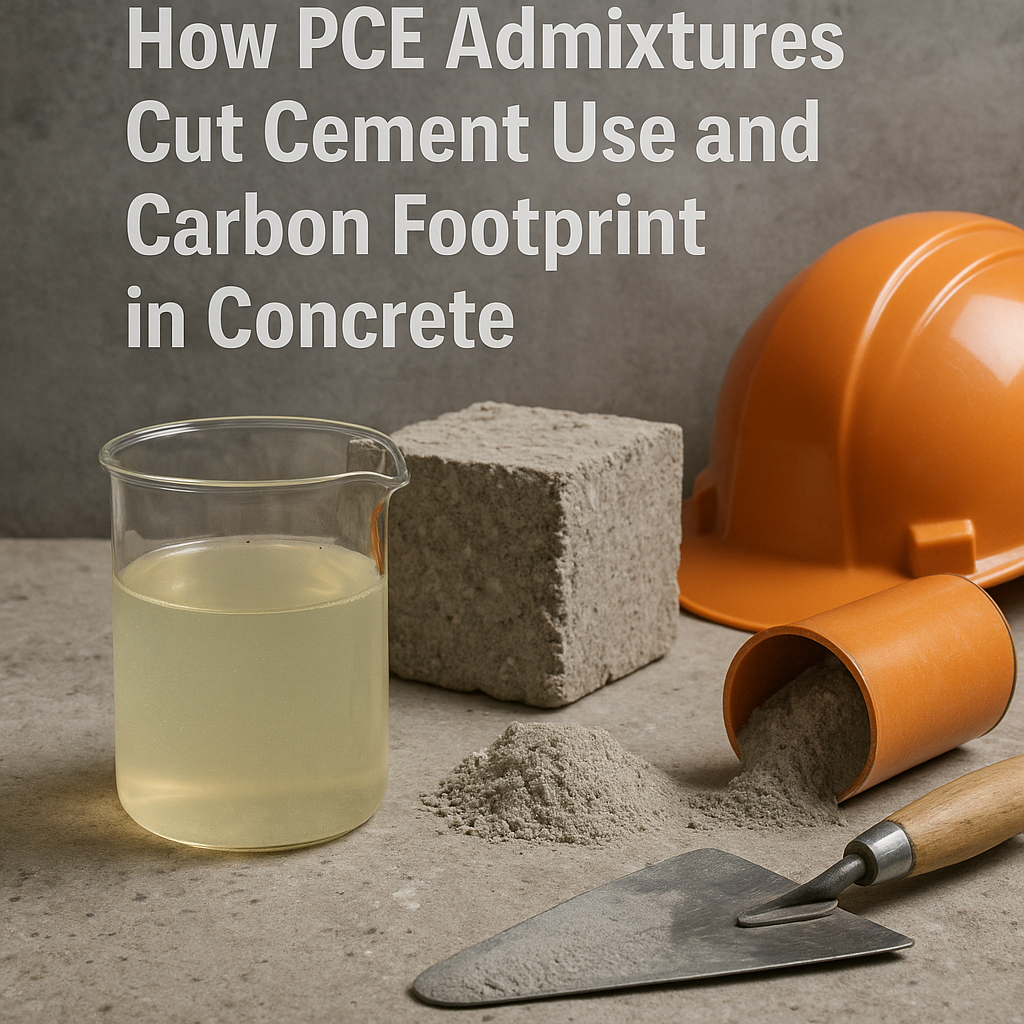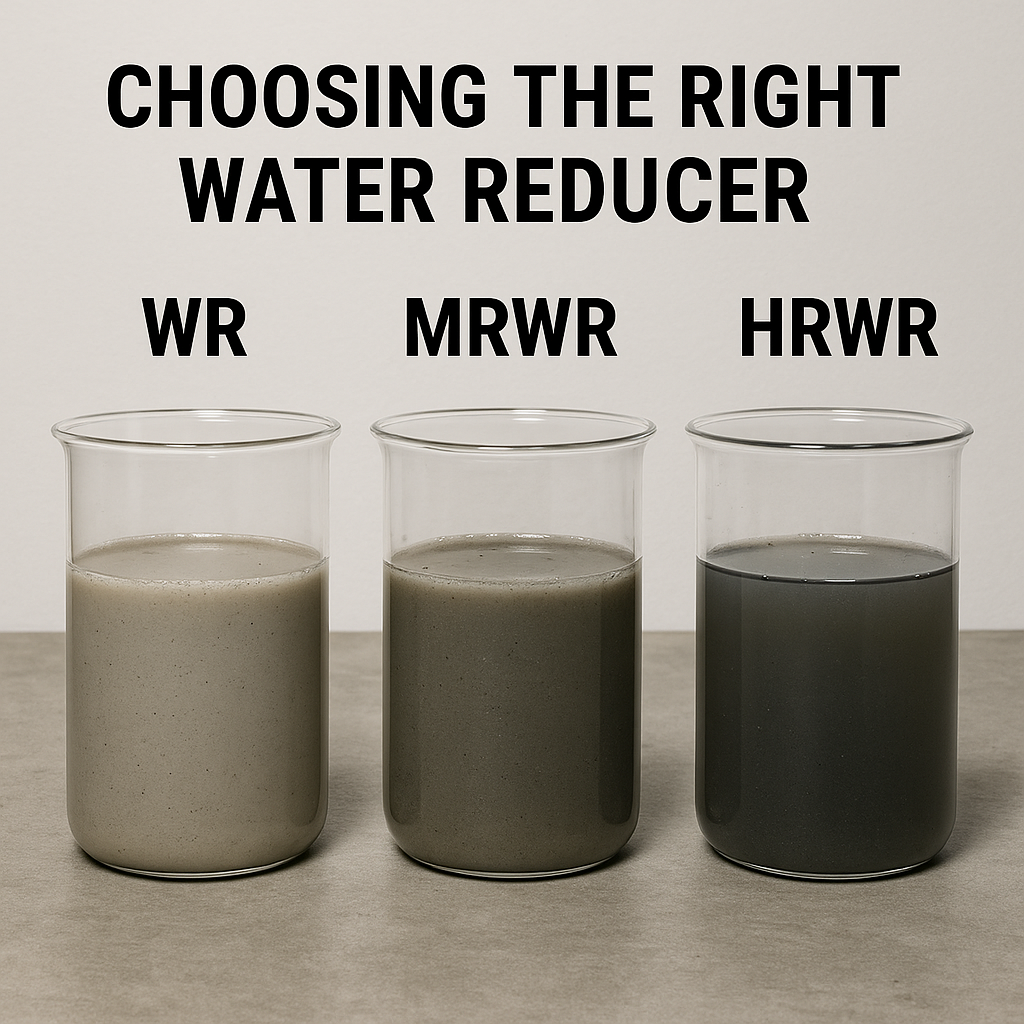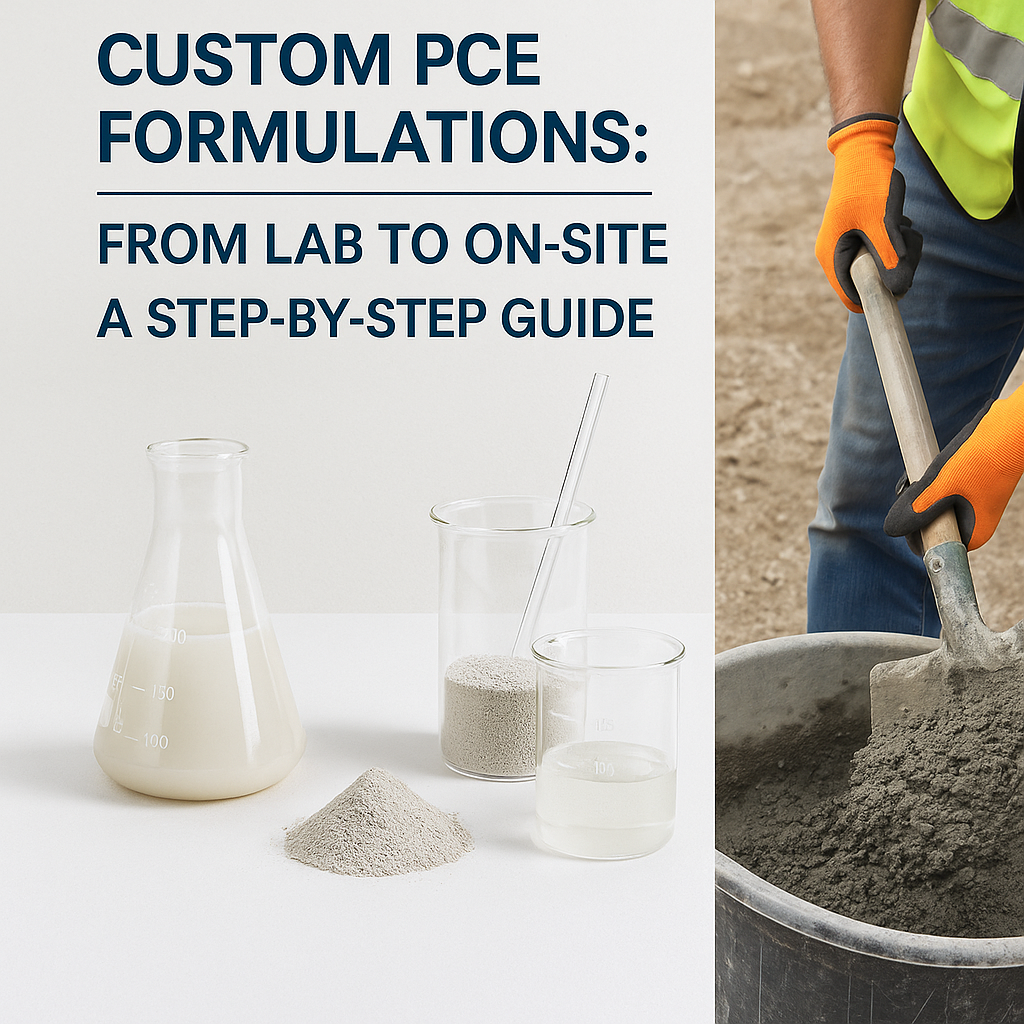How PCE Admixtures Cut Cement Use and Carbon Footprint in Concrete
As the construction industry grapples with its environmental impact, innovative materials and methods are emerging to reduce its carbon footprint. One such advancement is the use of polycarboxylate ether (PCE) admixtures in concrete production. These high-range water reducers not only improve the quality and performance of concrete but also help reduce cement consumption—a major contributor

As the construction industry grapples with its environmental impact, innovative materials and methods are emerging to reduce its carbon footprint. One such advancement is the use of polycarboxylate ether (PCE) admixtures in concrete production. These high-range water reducers not only improve the quality and performance of concrete but also help reduce cement consumption—a major contributor to CO₂ emissions. In this blog post, we’ll delve into how PCE admixtures can shrink the environmental footprint of concrete construction, support sustainable building practices, and contribute to green certifications like LEED.
Understanding PCE Admixtures
What Are PCE Admixtures?
PCE (Polycarboxylate Ether) admixtures are a class of chemical compounds used as high-performance water reducers in concrete. Unlike traditional plasticizers, PCEs offer enhanced dispersion of cement particles through steric hindrance, which makes the concrete more workable at lower water content, and allows for significant cement reduction without compromising strength.
How Do They Work?
The molecular structure of PCEs includes a backbone that adheres to cement particles and side chains that repel each other. This unique architecture optimizes the fluidity of the mix even with reduced water content. As a result, concrete mixed with PCE admixtures exhibits:
- Improved slump retention
- Enhanced pumpability and finishability
- Faster strength development
- Reduced water-to-cement ratio
The Environmental Burden of Cement
Why Cement Is a Carbon Culprit
Cement production is among the most carbon-intensive industrial processes, accounting for approximately 8% of global CO₂ emissions. The calcination process—the heating of limestone to make clinker—releases massive amounts of greenhouse gases. Reducing the demand for cement directly correlates with lowering CO₂ emissions in the built environment.
Concrete’s Role in Sustainability
While concrete is the most used construction material globally due to its strength and versatility, it also presents a massive environmental burden when not mixed efficiently. The integration of performance-enhancing components like PCEs helps bridge the gap between structural requirements and environmental responsibility.
Sustainability Benefits of PCE Admixtures
1. Lower Cement Demand
One of the primary sustainability advantages of PCE admixtures is cement reduction. Because these admixtures provide superior dispersion and workability, the same (or higher) concrete strength can be achieved with less cement.
- A typical concrete mix using PCE can reduce cement content by up to 20% without sacrificing performance.
- Lower water requirements mean a reduced water-to-cement ratio, enhancing strength development and durability.
2. Reduced CO₂ Emissions
Reducing cement leads to direct CO₂ savings. On average, producing one ton of cement generates about 0.9 tons of CO₂. Therefore, each percentage of cement reduction magnifies into meaningful carbon savings:
- If PCEs reduce cement content by 100 kg/m³ across 1000 m³ of concrete, that equates to 90 metric tons of CO₂ avoided.
- Widespread adoption in large-scale infrastructure or commercial projects significantly multiplies environmental benefits.
3. Contribution to LEED and Green Certifications
Leadership in Energy and Environmental Design (LEED) is one of the most recognized green building certification schemes worldwide. PCE admixture use can contribute to earning credits in several categories:
- Materials and Resources: Reduced cement content may help qualify under Building Product Disclosure & Optimization.
- Energy and Atmosphere: Lower embodied carbon supports the optimization of building energy performance.
- Innovation: Innovative use of materials and methods that significantly reduce environmental impact can gain points.
By aligning with LEED and similar sustainable building frameworks, the use of PCE admixtures becomes more than an engineering choice—it evolves into a strategic decision for environmental responsibility and project distinction.
Performance Synergies with Other Sustainable Practices
Use of Supplementary Cementitious Materials (SCMs)
PCE admixtures work synergistically with supplementary cementitious materials like fly ash, slag, and silica fume. These SCMs are industrial by-products that replace a portion of the cement, further reducing CO₂ emissions. When combined with PCEs:
- Concrete retains or improves strength and durability
- Early strength gain can be improved despite lower cement content
- Overall embodied energy of concrete decreases significantly
Optimizing Concrete Mix Designs
Adopting PCE admixtures also enables the fine-tuning of concrete mix designs for specific performance objectives—lower heat of hydration, higher flowability for self-consolidating concrete, or longer workability retention for hot climates. As a result, manufacturers and contractors can minimize waste, reduce repairs, and extend service life—all of which contribute to sustainability.
Real-World Impact and Industry Adoption
Case Studies Demonstrating PCE Effectiveness
Across the globe, major infrastructure and commercial projects are taking advantage of PCEs’ performance and sustainability benefits. Examples include:
- High-rise towers in urban environments where space and scheduling limit cement delivery and concrete batching options
- Bridge construction projects requiring long pumping distances and high early strength
- LEED-certified campuses and public buildings designed with reduced embodied carbon targets
In each case, PCE admixtures played a crucial role in:
- Enabling mix designs with reduced binder content
- Facilitating the use of recycled and local aggregates
- Enhancing lifecycle durability and material efficiency
Growing Regulatory and Market Support
With increasing regulatory emphasis on embodied carbon, many governments and industry bodies are encouraging or requiring practices that minimize emissions. The use of PCE admixtures is seen as a low-barrier, high-reward solution to meet these emerging standards:
- Qualified Credits in Environmental Product Declarations (EPDs)
- CO₂ benchmarks in public procurement tenders
- Corporate ESG goals focused on Scope 3 emissions
Conclusion: Decarbonizing Concrete Is Within Reach
As the world races to meet climate targets and reduce its carbon footprint, every industry must rethink its materials and methods—including construction. The use of PCE admixtures represents a powerful step forward in sustainable concrete production. By cutting cement usage, enabling the incorporation of greener raw materials, and delivering high-performance results, PCEs align seamlessly with global goals for reduced CO₂ emissions, resource conservation, and LEED certifications.
The transition to sustainable construction isn’t just about future technologies—it’s also about optimizing existing materials through smart chemistry and engineering. With PCE admixtures, builders, engineers, and developers have a readily available tool to make concrete both stronger and greener than ever before.
It’s time to build better. One cubic meter of concrete at a time.

